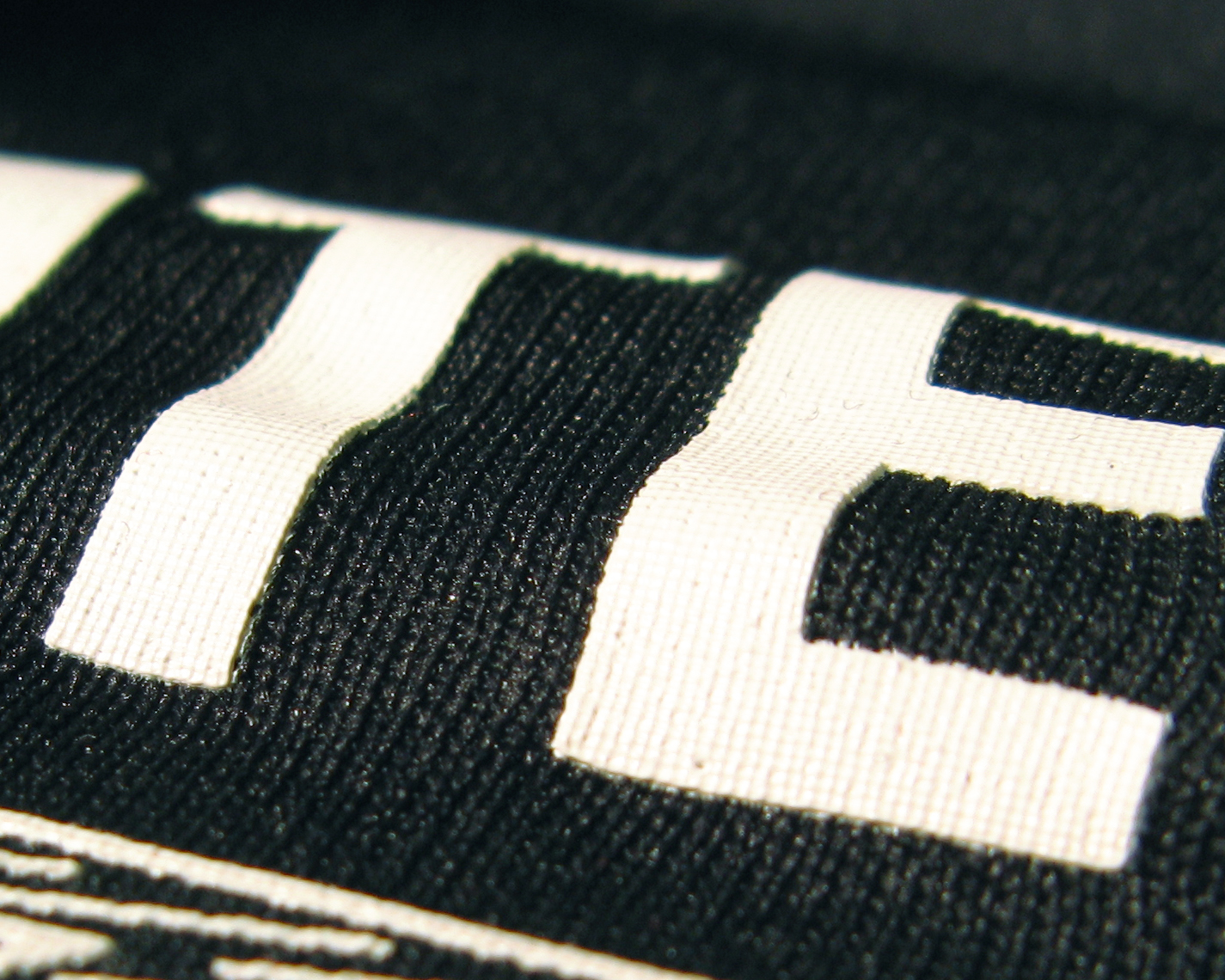 Inks for performance fabrics are usually formulated to be low-bleed, but may also have an added ingredient to improve their ability to stretch (such as International Coatings' Performance Pro 7100 Series inks). This is an important factor with these synthetic materials, which are often designed to stretch more than the cotton fabrics and blends with which many printers are more familiar. Just like the garment, the ink must be able not only to stretch, but also to return to its normal state afterward, a quality called memory. While it’s important to obtain a full cure, as with any plastisol, be careful not to overheat inks printed on highly stretchable fabrics. This tends to make the ink film more brittle than normal and detract from its durability and stretch properties.
Inks for performance fabrics are usually formulated to be low-bleed, but may also have an added ingredient to improve their ability to stretch (such as International Coatings' Performance Pro 7100 Series inks). This is an important factor with these synthetic materials, which are often designed to stretch more than the cotton fabrics and blends with which many printers are more familiar. Just like the garment, the ink must be able not only to stretch, but also to return to its normal state afterward, a quality called memory. While it’s important to obtain a full cure, as with any plastisol, be careful not to overheat inks printed on highly stretchable fabrics. This tends to make the ink film more brittle than normal and detract from its durability and stretch properties.Printing Tips for Today’s Fabrics Part 2
January 12, 2017
 Here is Part 2 of an article that was recently featured in Screen Printing Magazine’s October/November 2016 issue, and on Screenweb.com, Kieth Stevens gives us some tips on printing on today's modern fabrics:
Giving Up the Ghost
As I mentioned above, it’s always important to use the right ink for the fabric you’re printing. Using low-bleed inks when they aren’t needed is a good example of what can go wrong. If you print them on 100-percent cotton and some 50/50 fabrics, you can encounter a phenomenon known as ghosting, where an image of the print may inadvertently transfer to the back of a garment stacked on top of it. This happens because the reactive dyes used for some cotton colors can react with the low-bleed bleaching agents in the ink. The ink coming off the dryer is still hot and reactive, the moisture from the shirt may not have completely evaporated, and the stacking creates a hot, humid environment – perfect for the ink to react with the dye in the shirt stacked on top, thus creating an unwanted “ghost” image of the print. If you have a short dryer outfeed or you’re running at a fast belt speed, you may be more likely to see this problem.
Two tips: Be sure to cool each shirt completely before stacking or packing them. And instead of having just one stack of shirts at the end of the dryer, consider creating several to give the garments a chance to cool down before another goes on top.
Here is Part 2 of an article that was recently featured in Screen Printing Magazine’s October/November 2016 issue, and on Screenweb.com, Kieth Stevens gives us some tips on printing on today's modern fabrics:
Giving Up the Ghost
As I mentioned above, it’s always important to use the right ink for the fabric you’re printing. Using low-bleed inks when they aren’t needed is a good example of what can go wrong. If you print them on 100-percent cotton and some 50/50 fabrics, you can encounter a phenomenon known as ghosting, where an image of the print may inadvertently transfer to the back of a garment stacked on top of it. This happens because the reactive dyes used for some cotton colors can react with the low-bleed bleaching agents in the ink. The ink coming off the dryer is still hot and reactive, the moisture from the shirt may not have completely evaporated, and the stacking creates a hot, humid environment – perfect for the ink to react with the dye in the shirt stacked on top, thus creating an unwanted “ghost” image of the print. If you have a short dryer outfeed or you’re running at a fast belt speed, you may be more likely to see this problem.
Two tips: Be sure to cool each shirt completely before stacking or packing them. And instead of having just one stack of shirts at the end of the dryer, consider creating several to give the garments a chance to cool down before another goes on top.


